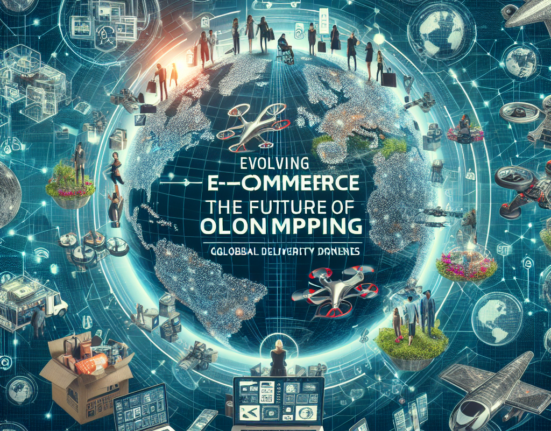The Future of Work: Embracing Digital Transformation
In a rapidly evolving world, the future of work is undeniably intertwined with digital transformation. As businesses, industries, and society at large pivot toward increased reliance on technology, adapting to this digital overhaul becomes not just a competitive advantage but a necessity. Embracing digital transformation involves a comprehensive shift in operations, culture, and mindset to leverage new digital technologies effectively. Here, we explore how digital transformation is shaping the future of work and the key elements driving this metamorphosis.
The Catalyst: Technological Advancements
Tech innovations are the primary catalyst behind the digital transformation of work. Cloud computing, artificial intelligence (AI), machine learning, and Internet of Things (IoT) are no longer futuristic concepts but actionable tools that are redefining business processes. These technologies allow for automation of routine tasks, data-driven decision-making, and enhanced connectivity, breaking down traditional barriers in the workplace.
1. Automation and AI:
Automation and AI are transforming job roles and expectations. From chatbots handling customer service inquiries to AI algorithms optimizing supply chains, the scope is vast. This shift not only increases efficiency but also paves the way for more strategic and creative roles. Employees can focus on tasks that necessitate emotional intelligence, problem-solving skills, and innovation, areas where human capabilities outshine machines.
2. Remote Work:
The COVID-19 pandemic has accelerated the adoption of remote work, showing that physical presence is not a prerequisite for productivity. Digital transformation supports remote work through collaboration tools like Zoom, Slack, and Microsoft Teams, enabling seamless communication and project management from anywhere in the world. As companies recognize the benefits of a distributed workforce, such as reduced overhead costs and access to a broader talent pool, remote work is likely to remain a staple.
3. Data and Analytics:
In today’s digital era, data is a valuable asset. Analytics tools that can interpret vast amounts of data provide businesses with deep insights into market trends, consumer behavior, and internal operations. Companies can make more informed decisions, personalize customer experiences, and predict future outcomes, thus staying ahead of the competition.
The Human Factor: Skills and Culture
As technology takes a front seat, the human factor becomes ever more crucial. Digital transformation is as much about people as it is about technology. Fostering a culture of continuous learning and adaptability is fundamental.
1. Upskilling and Reskilling:
The fast pace of technological change means that skills can quickly become obsolete. Organizations need to invest in upskilling and reskilling their employees to stay relevant. Online learning platforms and corporate training programs are essential in equipping the workforce with new capabilities, from data literacy to advanced digital tools.
2. Agile and Inclusive Culture:
An agile work environment that encourages rapid adaptation and innovation is critical for digital transformation. Furthermore, fostering an inclusive culture where diverse perspectives are valued can drive creative solutions and better decision-making. Ensuring that all employees are comfortable and adept at using new technologies can bridge the digital divide within an organization.
The Organizational Perspective: Strategic Implementation
For successful digital transformation, businesses need a strategic approach to implementing new technologies. This involves a clear vision, robust planning, and effective execution.
1. Leadership and Vision:
Strong leadership is pivotal in driving digital transformation. Leaders must articulate a clear vision of how technology will enhance the business and inspire their teams to embrace change. This involves not only setting strategic objectives but also demonstrating a commitment to the digital roadmap.
2. Technology Integration:
Choosing the right technology stack is critical. It’s not about jumping on every new tech trend but about selecting tools that align with the company’s strategic goals. Integration of digital tools should be seamless, improving inter-departmental collaboration and operational efficiency.
3. Continuous Improvement:
Digital transformation is not a one-time project but an ongoing process. Regular assessment, feedback mechanisms, and a willingness to pivot strategies based on what works are essential. Continuous improvement ensures that the organization evolves with technological advancements and market demands.
Conclusion
The future of work is digital, and embracing digital transformation is paramount for staying relevant and competitive. By leveraging technological advancements, fostering a culture of learning and agility, and strategically implementing digital tools, organizations can not only survive but thrive in this new era.
As we step into an increasingly digitized future, the synergy between technology and human potential will shape the workplace of tomorrow. Preparing for this transformation today will ensure a resilient, innovative, and sustainable future of work.
















Leave feedback about this
You must be logged in to post a comment.